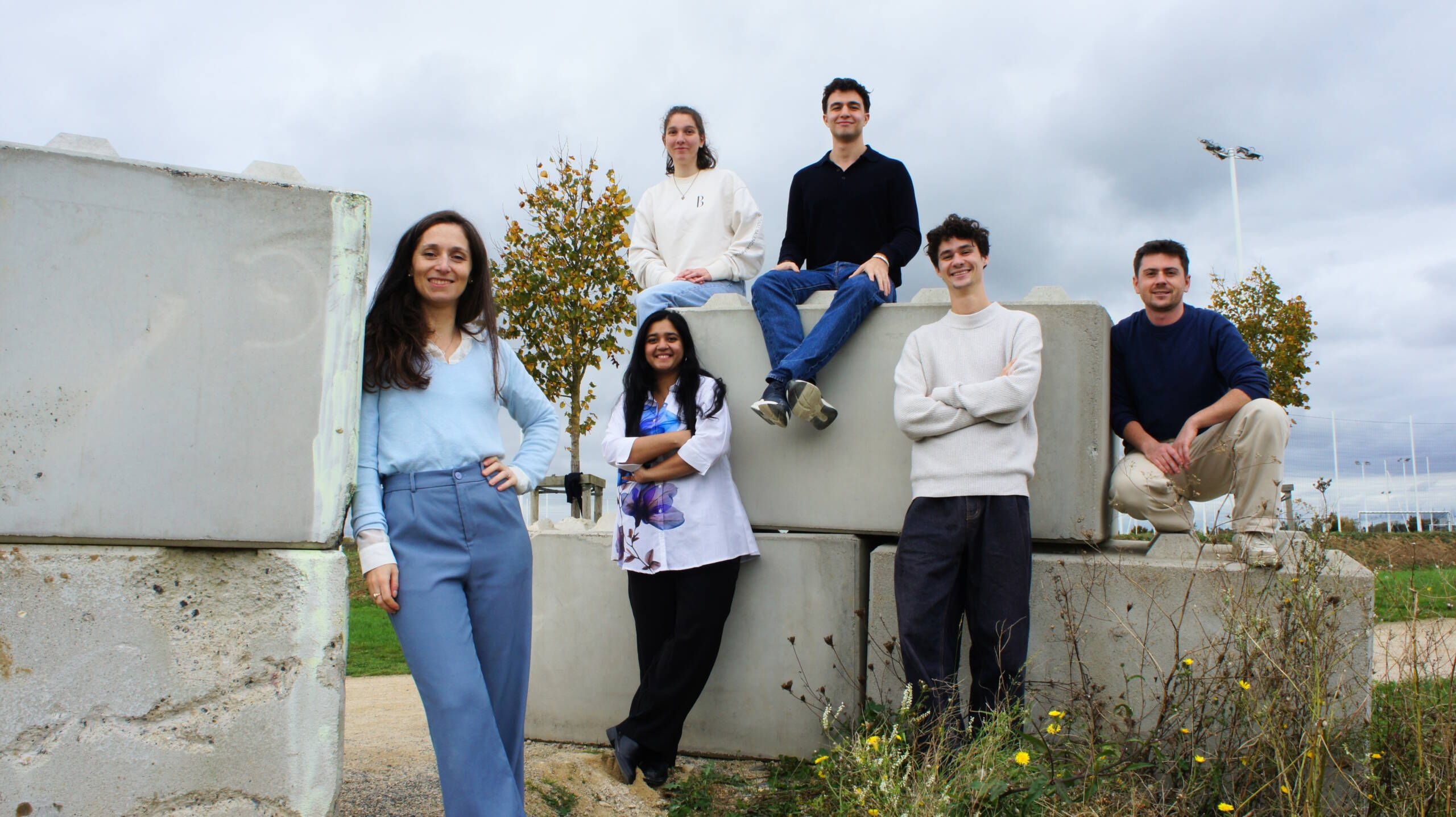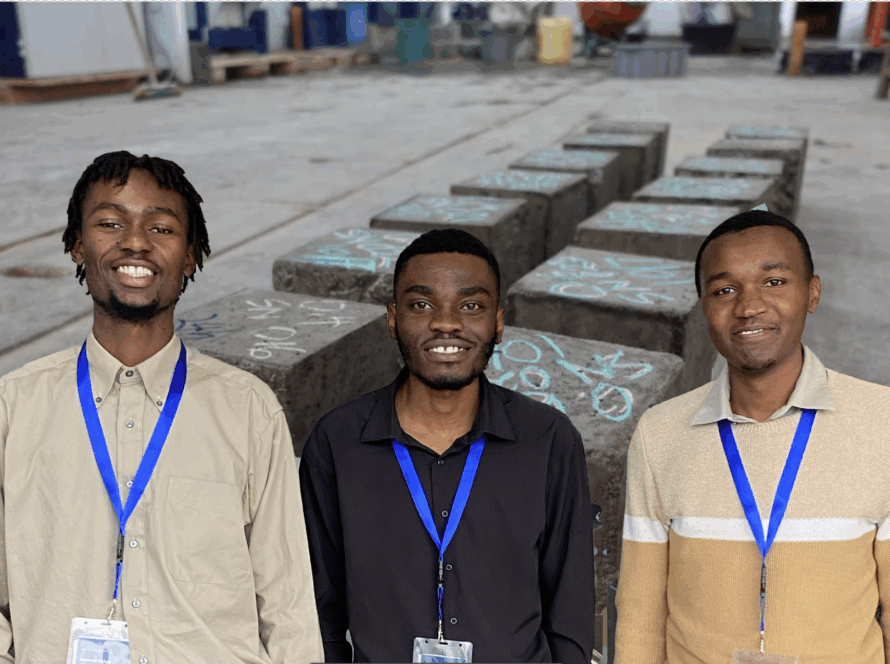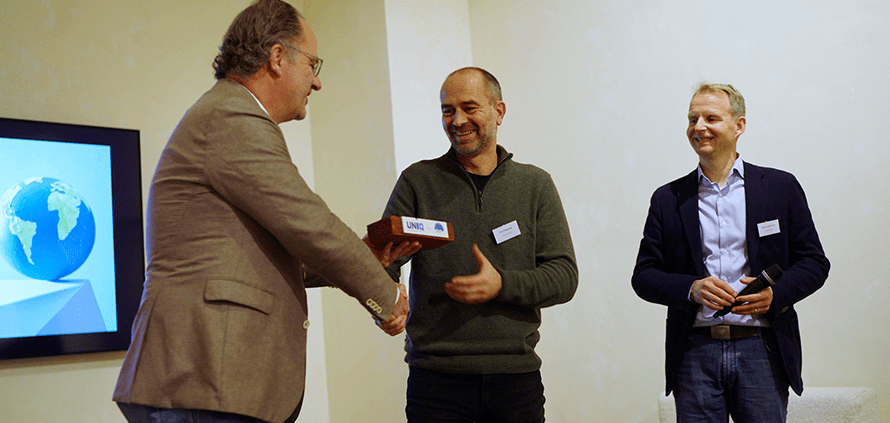Q&A with Caroline Thaler of Bloomineral
Q: Can you describe Bloomineral in simple terms?
We’ve found a way to store carbon in everyday materials, from paint to paper and cement. We add algae to turn atmospheric CO2 and waste products into calcium carbonate crystals using a process called bio-mineralization photosynthesis. It’s like growing plants in an aquarium. We use only CO2, seawater, waste substances and light for the process. The crystals grow straight back after we harvest them. We’re basically domesticating a new species.
Q: How permanently can you store carbon with your method?
If we want to have a climate impact, we absolutely need to prioritize materials such as cement, which locks carbon up indefinitely. That’s why we’re co-developing our solution with cement producers.
However, we are also prioritizing applications where there is a high added value. The carbon market isn’t there yet, so we need to scale this CDR solution without relying on political incentives or carbon credits.
Q: What inspired you to work on it?
At the core of Bloomineral is bio-mineralization, in which organisms take up CO2 and turn it into a mineral. I worked for 10 years as a biogeochemist in academia on biomineralization. It’s been my whole life. We scientists work on calcium carbonate occurring in nature because it acts as a historic thermometer — if we drill into it, it can tell us what temperatures were like when dinosaurs were around, for instance.
Q: Why is your methodology important for climate change?
Mineralization is vital for climate mitigation because we have to permanently store CO2 to stabilise the climate. There’s only two options for storage: underground, or in materials. We’ve gone for the latter because we believe storing it in materials is the most economically feasible way to store CO2. We need CO2 removal without having to pay for CO2 removal, nor its storage..! And that’s exactly the promise of carbon negative materials. We get revenue from selling the minerals and that pays for the removal and storage.
Q: Where do you get your feedstocks from?
We need two particular types: one, a source of alkalinity, and two, light and seawater for photosynthesis. We use waste for alkalinity: demolition waste, or soda ash, or waste from the sugar industry.
Q: And what’s your business case?
The main product is the mineral, it’s a highly technical product with impressive specs. It brings compressive strength, opacity, a white reflective surface. It makes paper glossy. We can sell our minerals for €180 and up to €20,000 per ton, depending on the market.
 Q: What are you most excited about?
Q: What are you most excited about?
I’m most excited about the fact that we are creating a new biotechnology. It’s a blank page and there’s everything to do. Everyone who joins us becomes the first expert on their role in this field.
The other thing that is quite exciting is all of the applications that we are discovering for the crystals. These crystals of calcium carbonate are already everywhere – but right now, we emit CO2 to produce them. We’re constantly discovering new places where they hide – they’re in cosmetics, paper, food. So there are many applications for our materials.
Q: What have you achieved so far?
We’ve achieved a certain level of proof of concept. We’re still at the lab level, but we’re looking to do a pilot. We’re gathering a team of bio-mineralization specialists and we’re gaining traction: we’ve signed a letter of intent with a paint producer and we have multiple support letters from large construction and cement companies such as Vinci or Holcim. We also have been selected in the first French automotive startup innovation selection, and we’re exploring applications in plastics and composites. We’re also entering into a phase of collaborative R&D development, including with a steel company and with a waste company called Suez to develop a tech that is safe for the environment.
Q: What’s your vision?
We want to be able to scale biomineralization to achieve three key impacts. First, we aim to remove 250 million tons of CO2 annually. Secondly, we can displace an additional 300 million tons of carbon dioxide emissions by replacing high-carbon materials like cement. We could also replace harmful materials such as titanium dioxide.
Thirdly, our white carbonate materials can be used to construct buildings, help cities adapt to rising temperatures by reflecting heat and reducing urban temperatures by up to 4 degrees.
Q: What makes this project challenging? What are the barriers to success?
Our hybrid technology makes it difficult to communicate to people. We’re talking biology to cement makers. There are multiple markets and we’re at the forefront of everything. So, communication, especially around scale up, is our number one challenge.
Our technological challenge is the domestication of a species…!
Q: What kind of social, cultural, political will and momentum is needed to help you achieve your goals?
Politically, we need binding national and corporate decarbonization targets.
Socially, we need to abandon extractive material production. We’ve already transformed how people think about recycling and carbon footprints — now we need that same shift for industrial-scale material production. We can’t afford to use massive amounts of energy to burn things any more.
For example — as a biogeochemist, I used to work on cold reefs. Some companies destroy these environments to harvest calcium at sea, which is then used to produce Lithothamnium, feed for chickens and cows. They say they’re harvesting from dead sea beds, but even ‘dead’ sea beds are a vibrant living ecosystem! So as a first step, we’d like to replace that process and create an alternative product. Lithothamnium goes for €10,000 a ton, but we could produce a much cheaper and sustainable alternative.
Q: What do you wish people outside the climate space knew?
I don’t think people change their behavior just because they know something. I’m starting to learn more about behavioural changes in the population, and have realised it’s less about what people know and more about whether the future looks desirable to them. I wish we in the climate tech community knew how to communicate a desirable future.




